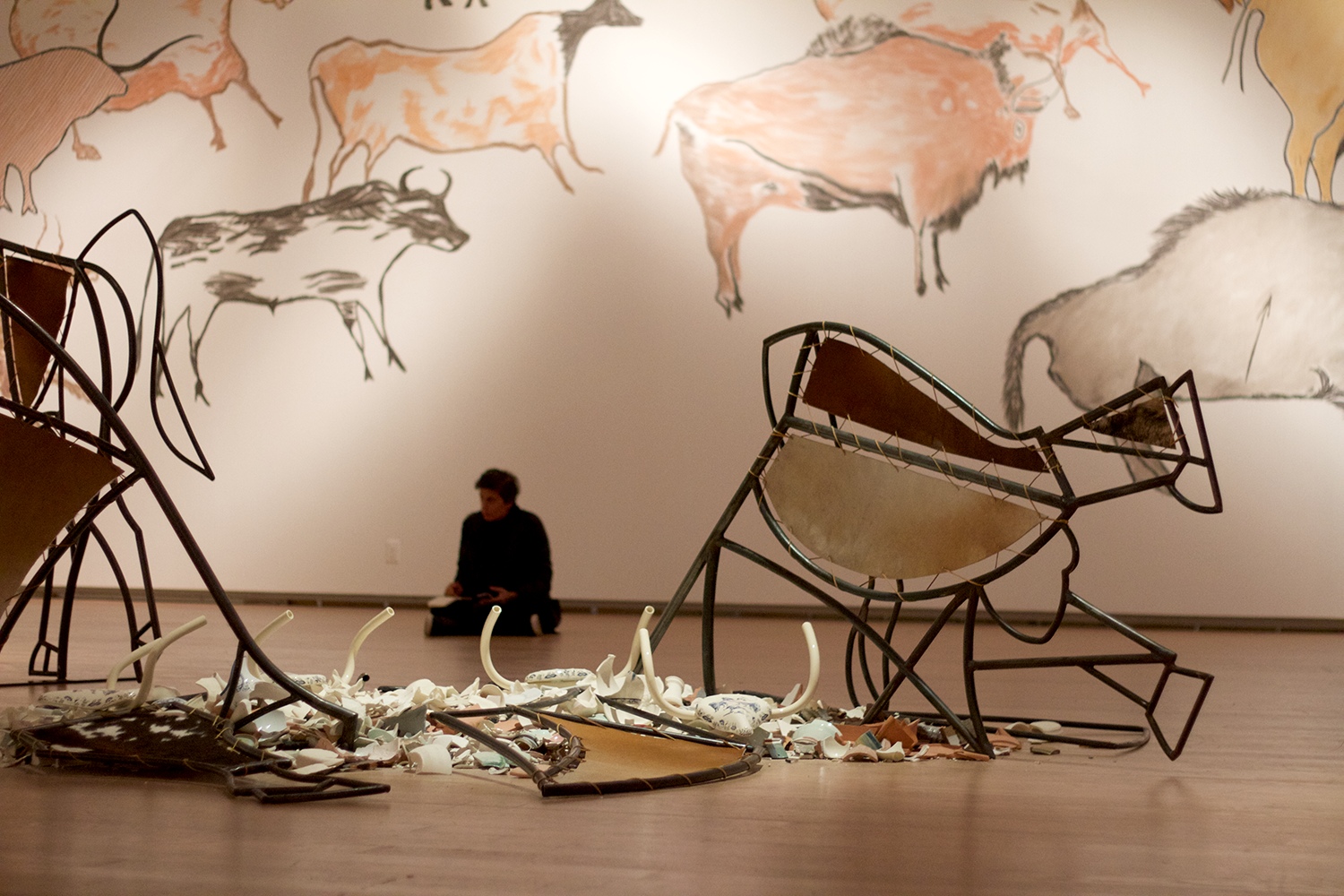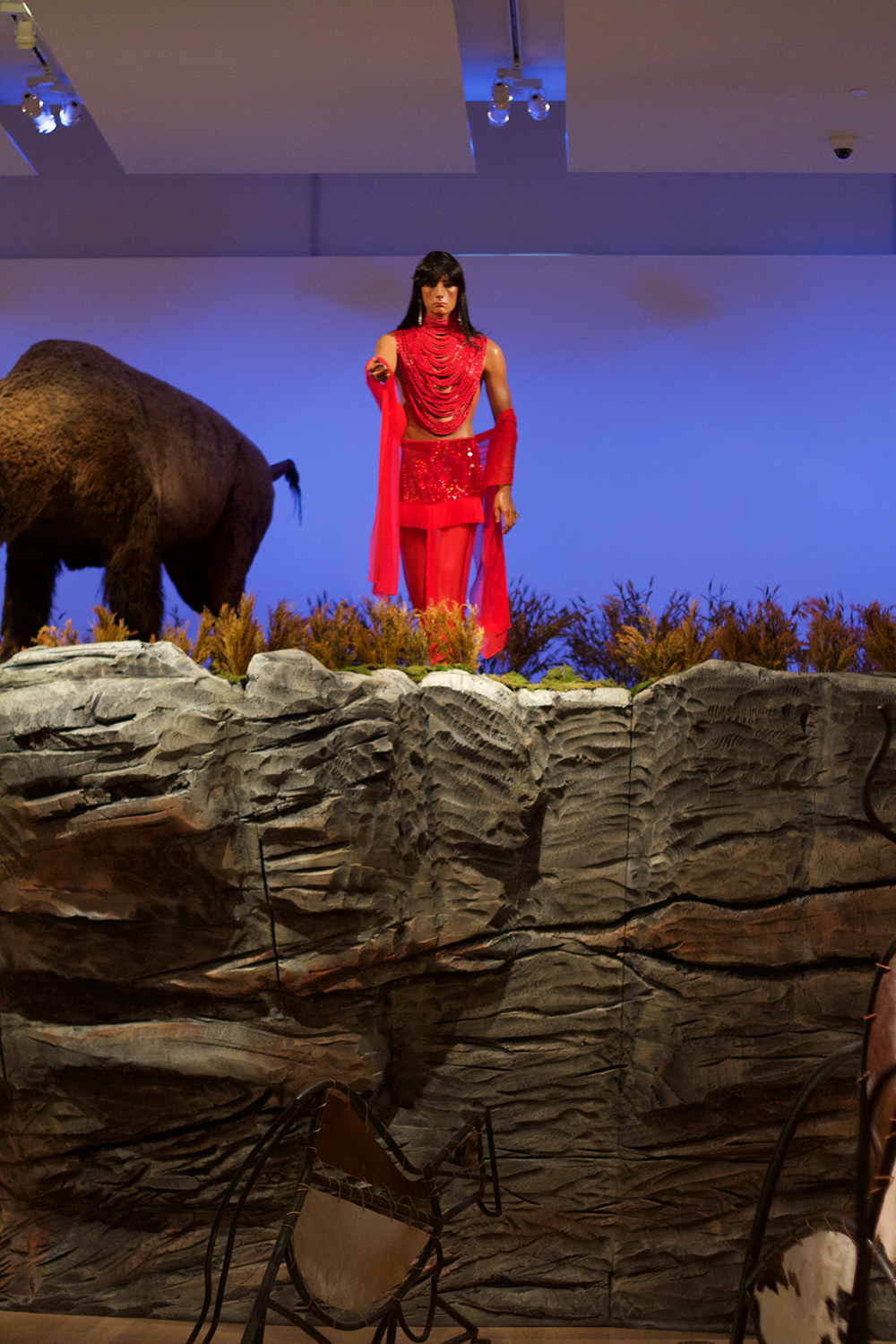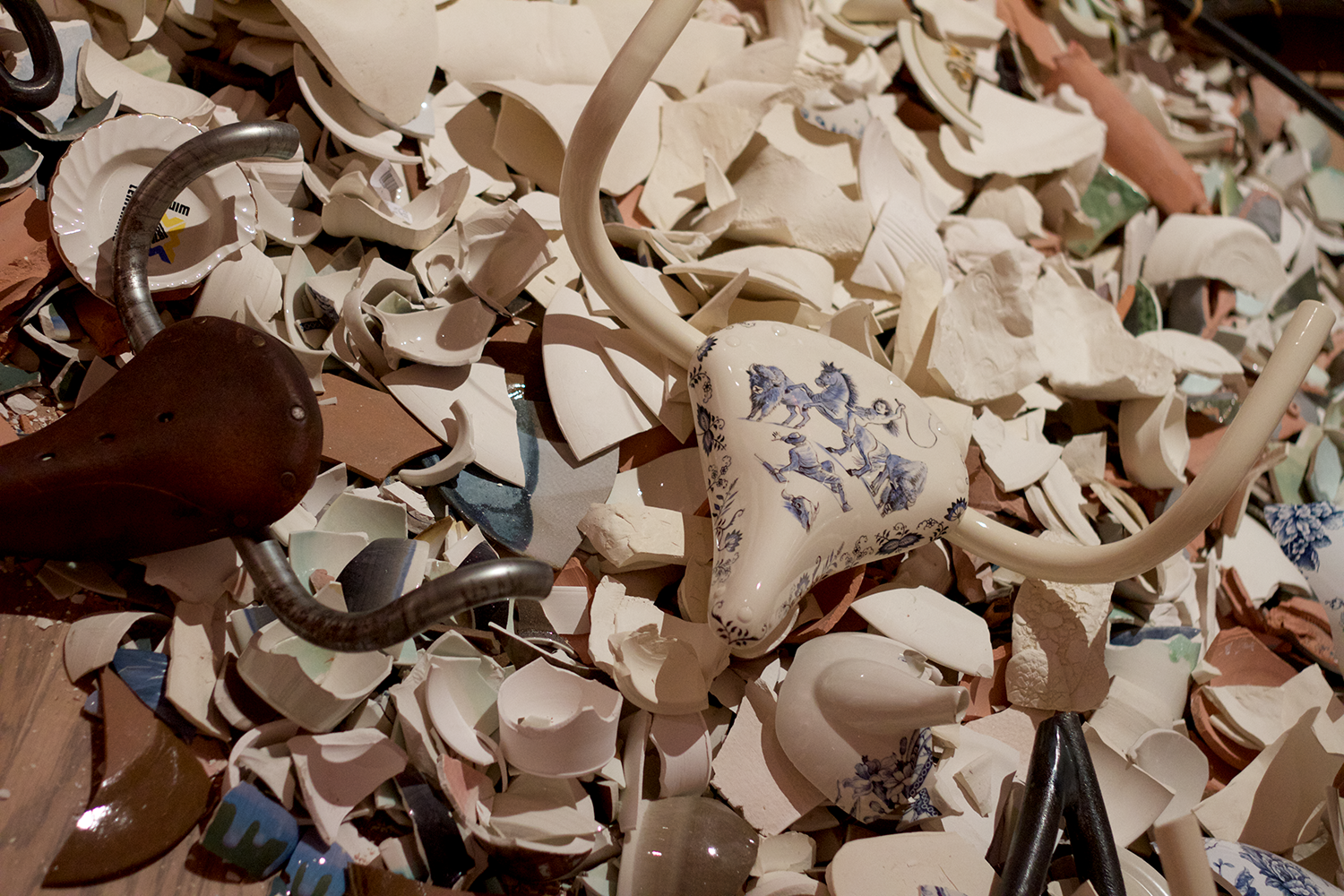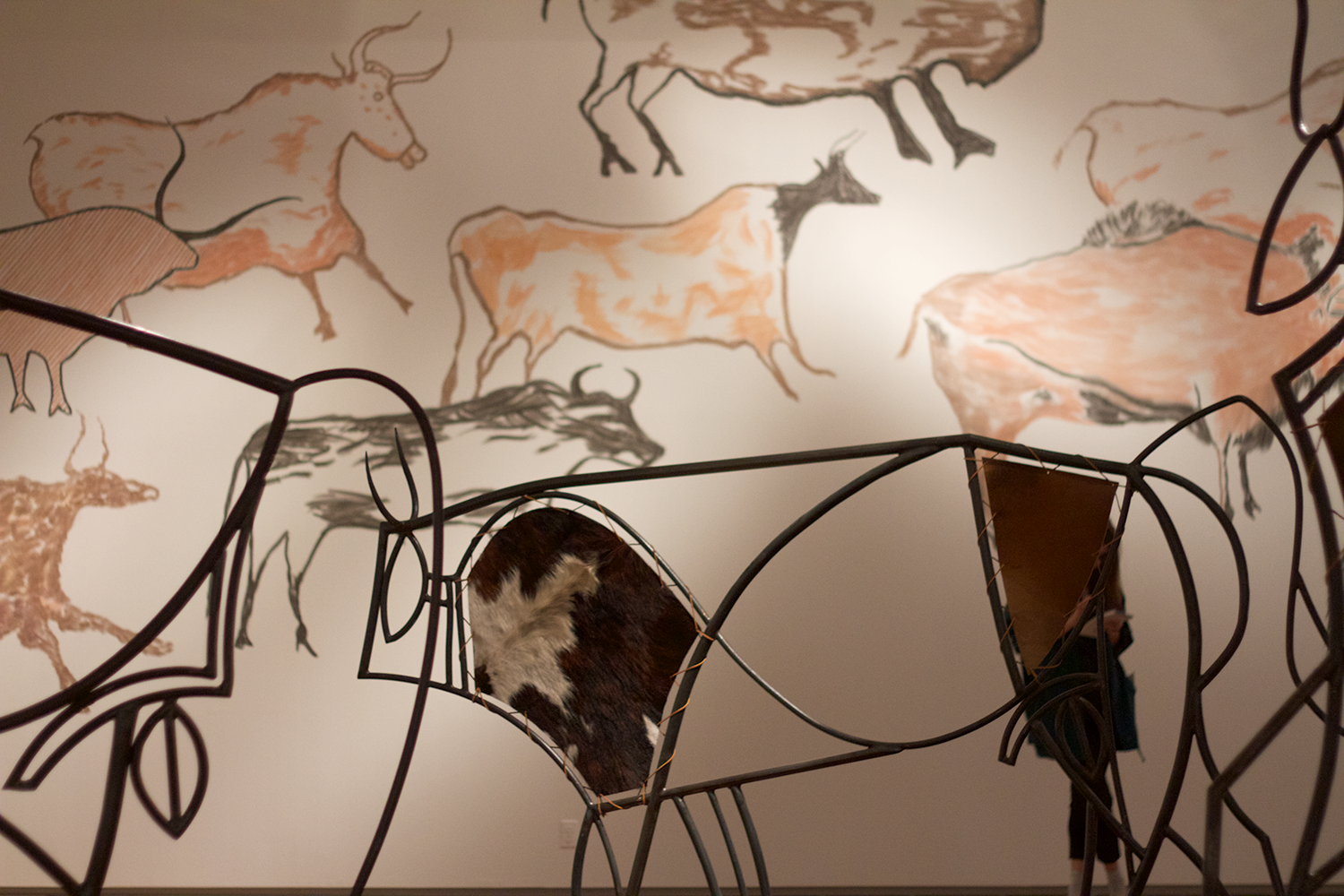Dioramas tend to be one-sided theatrical depictions of life. Often visually overwhelming or plainly boring, these 19th century devices might seem like a dated medium for a contemporary artist. However, Kent Monkman’s installation at the Gardiner Museum is anything but dated or one-dimensional. Inspired by multiple histories told at once, and full of contemporary connotations, The Rise and Fall of Civilization is a show worth seeing.
Upon entering the room, we find giant walls covered in what looks like cave paintings of bison and bulls, reminiscent of ancient sites like Altamira or Chauvet. All these animals are running towards the centre of the space, converging at a structure “measuring approximately 9 feet high, simulating a natural rock formation used to hunt buffalo”, often called the buffalo jump. At the top of the jump we find Miss Chief, the artist alter ego. While her presence is hard to miss, her role in this procession seems very ambiguous. Whether she is guiding the jump or trying to stop it – we are left wondering.
On the floor, being born from a pile of ceramics (that clearly references the build up of bones at buffalo jumps and also the bone china featured among the Gardiner’s collection) flat, geometric bulls materialize, running towards the cave paintings across the room. While at first glance the juxtaposition of mounted bulls at the top of the cliff and the Cubist bulls emerging from the ground might seem unexpected, but the artist provides a very compelling explanation. It is all about “the flow of history” and the “inevitable exchange” of cultural images and stories between Europe and the indigenous cultures, in the words of Monkman.
The flattening of the mounted bulls references the destruction of indigenous cultures and histories by Modernity. While Modernity served the Europeans as the possibility of a new beginning, of a blank canvas, of a new era, for the first nations modernity was a point of obliteration. Their culture, their customs and their persona were flattened, made one-dimensional, until they became a (Cubist) caricature.
However, these connotations are not only pertinent within 2oth century narratives. Without a doubt they also resonate today. Globalization and the information era might end up tearing apart that liberated blank canvas that we created from scratch during the last century. Perhaps we are just the next group of bison, slowly walking towards the cliff under the guidance of Miss Chief, without even knowing it.
Text and photo: Mauricio Contreras-Paredes
*Exhibition information: October 15, 2015 – January 10, 2016, The Gardiner Museum, 111 Queen’s Park, Toronto. Gallery hours: Mon – Thu, 10 – 6, Fri, 10 – 9, Sat – Sun, 10 – 5 p.m.




